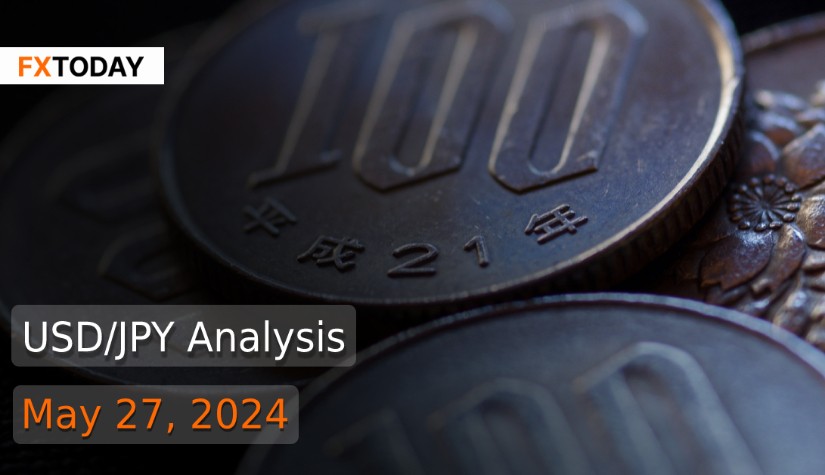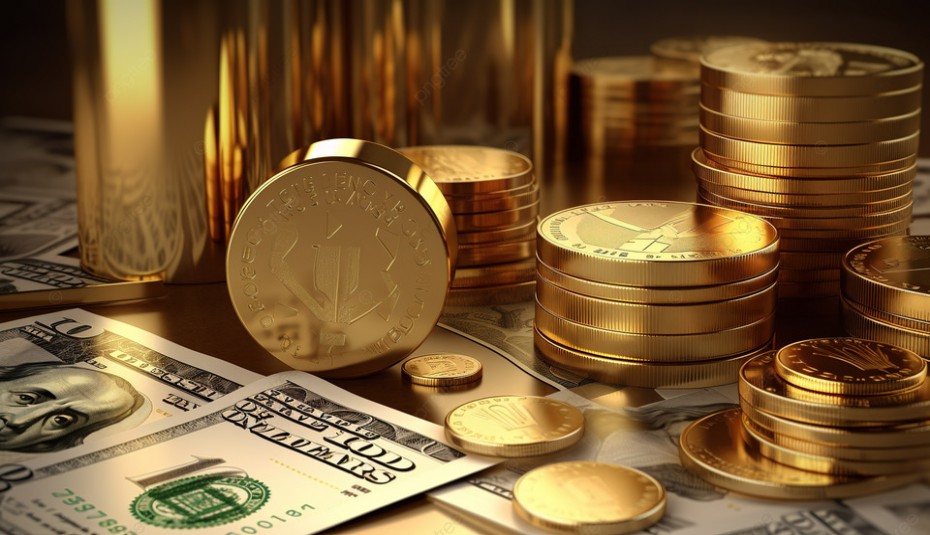Japan's Inflation Slows, BOJ Likely to Delay Rate Hike Amid Weak Consumer Spending
Japan's core inflation slowed for the second month in April, suggesting the Bank of Japan (BOJ) will likely delay raising interest rates due to weak consumer spending. Despite inflation being above the BOJ's 2% target, policymakers want to see sustainable domestic demand.
Market watchers are assessing how recent significant wage increases will affect inflation and prices. Persistent yen weakness has led to speculation that the BOJ might advance rate hikes to mitigate rising living costs. This speculation drove Japan's 10-year government bond yield to 1%, the highest since May 2013.
A weaker yen benefits exporters but raises import prices, harming household purchasing power and consumption. Japan's economy contracted at an annualized rate of 2% in the first quarter due to weak consumption, with real wages declining for two consecutive years. While higher wages are expected to boost spending, this has yet to be reflected in monthly data.
Bank of Japan Governor Kazuo Ueda stated that Japan's economy is on track for a moderate recovery, indicating that the first-quarter GDP slump wouldn't prevent potential interest rate hikes in the coming months. He noted that the outlook for the U.S. economy is a key risk factor to be discussed.
At the G7 meeting, finance leaders reaffirmed their stance against excessive currency volatility. Japan's top currency diplomat, Masato Kanda, reiterated that Tokyo is prepared to act against speculative moves harming the economy. The yen has fallen 11% against the dollar this year, and despite previous interventions, it remains weak, posing challenges for policymakers due to increased import costs and pressured consumption. Markets are now watching for potential further interventions by Japan to support the yen.
According to a Reuters poll, nearly two-thirds of economists expect the Bank of Japan (BOJ) to start tapering its bond-buying by the end of July, and close to 90% anticipate an interest rate hike to at least 0.20% by year-end. Despite ending negative rates in March, the BOJ continues purchasing around 6 trillion yen ($38.3 billion) monthly in government bonds to prevent yield spikes.
Meanwhile, Prime Minister Fumio Kishida aims to attract foreign investment by pledging capital market reforms and promoting asset management, as part of efforts to make Japan a more welcoming market. Establishing special business zones in Tokyo, Osaka, Fukuoka, and Sapporo is part of this strategy to shift the country's $13 trillion in household financial assets from cash into more productive investments.
Top Japanese companies agreed to an average 5.58% wage increase in March, the largest in 33 years, driven by labor shortages and rising consumer prices. This wage growth comes amid Japan's efforts to boost corporate profits and governance.
Japan's factory activity expanded in May for the first time in a year, with manufacturing gains offsetting a slight decline in services. However, manufacturers' optimism dipped due to inflationary pressures on input costs and output prices. Business-to-business wholesale inflation remained steady in April, with expectations of acceleration.
Japan's exports rose for the fifth consecutive month in April, aided by the weak yen, though shipment volumes struggled due to soft demand from major markets like the U.S. and China. Despite recent stimulus measures from Beijing, demand recovery in China was slow, impacting Japan's trade deficit. Imports grew 8.3% year-on-year, slower than expected, reflecting lagging local demand.
The dollar slipped against most major currencies on Friday as traders took profits after recent gains. Despite this, strong U.S. economic data supports the prospect of further dollar advances, reducing expectations for interest rate cuts.
April saw a higher-than-expected rebound in new orders and shipments for U.S.-manufactured capital goods, indicating increased business spending on equipment early in the second quarter. This followed Thursday's data showing the fastest U.S. business activity in over two years and rising input prices for manufacturers.
The personal consumption expenditures (PCE) price index, a key inflation gauge, will be closely watched for insights into future interest rate decisions. Markets are increasingly accepting the "higher-for-longer" interest rate narrative, reinforced by cautious remarks from Fed officials doubting a reliable downward trend in inflation.
Several Fed officials, including Governor Michelle Bowman and New York Fed President John Williams, will speak this week, providing further clues about monetary policy. The economic calendar also includes revised first-quarter growth data and the Fed's Beige Book.
Tokyo inflation data, due Friday, will be monitored as markets anticipate the Bank of Japan's next rate hike, potentially at its upcoming meeting. Additionally, Japan's Ministry of Finance will release intervention data and the BOJ's bond-buying schedule, with traders looking for potential reductions in bond purchases.
Data for Technical Analysis (30Min) CFD USD/JPY
Resistance : 156.77, 156.80, 156.84
Support : 156.69, 156.66, 156.62
30Min Outlook
Source: TradingView
Buy/Long 1 If the support at the price range 156.64 – 156.69 is touched, but the support at 156.69 cannot be broken, the TP may be set around 156.80 and the SL around 156.61, or up to the risk appetite.
Buy/Long 2 If the resistance can be broken at the price range of 156.77 – 156.82, TP may be set around 156.93 and SL around 156.67, or up to the risk appetite.
Sell/Short 1 If the resistance at the price range 156.77 – 156.82 is touched, but the resistance at 156.77 cannot be broken, the TP may be set around 156.69 and the SL around 156.85, or up to the risk appetite.
Sell/Short 2 If the support can be broken at the price range of 156.64 – 156.69, TP may be set around 156.55 and SL around 156.79, or up to the risk appetite.
Pivot Points May 27, 2024 03:52AM GMT
|
Name
|
S3
|
S2
|
S1
|
Pivot Points
|
R1
|
R2
|
R3
|
|---|---|---|---|---|---|---|---|
| Classic | 156.58 | 156.62 | 156.69 | 156.73 | 156.8 | 156.84 | 156.91 |
| Fibonacci | 156.62 | 156.66 | 156.69 | 156.73 | 156.77 | 156.8 | 156.84 |
| Camarilla | 156.72 | 156.73 | 156.74 | 156.73 | 156.76 | 156.77 | 156.78 |
| Woodie's | 156.58 | 156.62 | 156.69 | 156.73 | 156.8 | 156.84 | 156.91 |
| DeMark's | - | - | 156.7 | 156.74 | 156.81 | - | - |
Sources: Investing 1, Investing 2
















